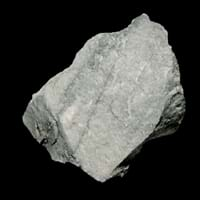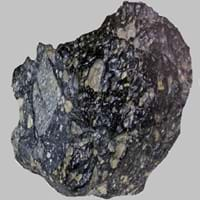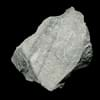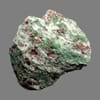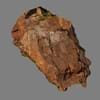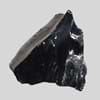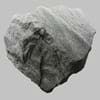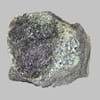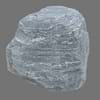Definition
Quartzite is a non-foliated metamorphic rock that forms by the metamorphism of pure quartz Sandstone
Granite is a very hard, granular, crystalline igneous rock which consists mainly of quartz, mica, and feldspar and is often used as building stone
Discoverer
Unknown
Unknown
Etymology
From quartz + -ite
From Italian granito, which means grained rock, from grano grain, and from Latin granum
Class
Metamorphic Rocks
Igneous Rocks
Sub-Class
Durable Rock, Hard Rock
Durable Rock, Hard Rock
Group
Not Applicable
Plutonic
Other Categories
Medium Grained Rock, Opaque Rock
Coarse Grained Rock, Opaque Rock
Texture
Foliated, Granular
Granular, Phaneritic
Color
Black, Blue, Brown, Green, Light Grey, Purple, White, Yellow
Black, Grey, Orange, Pink, White
Durability
Durable
Durable
Scratch Resistant
Yes
Yes
Appearance
Lustrous
Veined or Pebbled
Interior Uses
Countertops, Decorative Aggregates, Flooring, Homes
Countertops, Decorative Aggregates, Entryways, Floor Tiles, Flooring, Homes, Hotels, Interior Decoration, Kitchens, Stair Treads
Exterior Uses
As Building Stone, As Facing Stone, Garden Decoration, Paving Stone
As Building Stone, As Facing Stone, Bridges, Paving Stone, Garden Decoration, Near Swimming Pools, Office Buildings, Resorts
Other Architectural Uses
Curbing
Curbing
Construction Industry
Arrowheads, As Dimension Stone, Cement Manufacture, Construction Aggregate, Cutting Tool, for Road Aggregate, Making natural cement, Production of Glass and Ceramics, Rail Track Ballast, Roadstone
As Dimension Stone
Medical Industry
Not Yet Used
Not Yet Used
Antiquity Uses
Artifacts, Jewellery, Monuments, Sculpture
Monuments, Sculpture, Small Figurines
Commercial Uses
An Oil and Gas Reservoir, As armour rock for sea walls, Cemetery Markers, Commemorative Tablets, In aquifers, Laboratory bench tops, Petroleum reservoirs, Soil Conditioner, Source of Magnesia (MgO), Tombstones, Used in aquariums
Curling, Gemstone, Laboratory bench tops, Tombstones, Used in aquariums
Types
Not Available
Igneous Protolith Granite, Sedimentary Protolith Granite, Mantle Granite, Anorogenic Granite, Hybrid Granite, Granodiorite and Alkali Feldspar Granite
Features
Generally rough to touch, Is one of the oldest rock
Available in Lots of Colors and Patterns, It is One of the Oldest, Strongest and Hardest Rock
Archaeological Significance
Famous Monuments
Data Not Available
Agia Sophia in Istanbul, Turkey, Blue Domed Church in Santorini, Greece, Blue Mosque in Istanbul, Charminar in Hyderabad, India, Diana, Princess of Wales Memorial Fountain in London, UK, Ephesus in Turkey, Georgia Guidestones in Georgia, US, Hermitage in Saint Petersburg, Khajuraho Temples, India, Mahabalipuram in Tamil Nadu, India, Mysore Palace in Karnataka, India, Signers Monument in Augusta, Georgia, Statue of Liberty in New York, USA, Taj Mahal in Agra, India, Tower Bridge in London, Vietnam Veterans Memorial in Washington, US, Washington Monument, US
Famous Sculptures
Data Not Available
Avukana Buddha Statue in Sri Lanka, Lincoln Memorial in America, Mount Rushmore National Memorial in South Dakota, US, The Colossal Red Granite Statue of Amenhotep III in Karnak, Egypt
Pictographs
Not Used
Not Used
Petroglyphs
Not Used
Not Used
Formation
Quartzite forms from sandstone and the mineral quartz being put under extreme heat and pressure.
Granite is an intrusive igneous rock which is very hard, crystalline and is visibly homogeneous in texture and forms by melting of continental rocks
Mineral Content
Chlorite, Epidote, Hematite, Kyanite, Magnetite, Muscovite or Illite, Quartz
Amphibole, Biotite, Feldspar, Hornblade, Micas, Muscovite or Illite, Plagioclase, Pyroxene, Quartz
Compound Content
Aluminium Oxide, CaO, Iron(III) Oxide, MgO, Sodium Oxide, Silicon Dioxide
Aluminium Oxide, CaO, Iron(III) Oxide, FeO, Potassium Oxide, MgO, MnO, Sodium Oxide, Phosphorus Pentoxide, Silicon Dioxide, Titanium Dioxide
Types of Metamorphism
Burial Metamorphism, Cataclastic Metamorphism, Hydrothermal Metamorphism, Regional Metamorphism
Burial Metamorphism, Cataclastic Metamorphism
Types of Weathering
Biological Weathering, Chemical Weathering, Mechanical Weathering
Biological Weathering
Types of Erosion
Chemical Erosion, Coastal Erosion, Water Erosion, Wind Erosion
Chemical Erosion, Sea Erosion, Water Erosion
Grain Size
Medium Grained
Large and Coarse Grained
Fracture
Uneven, Splintery or Conchoidal
Not Available
Porosity
Less Porous
Less Porous
Luster
Vitreous
Dull to Grainy with Sporadic parts Pearly and Vitreous
Cleavage
Indiscernible
Not Available
Toughness
1.9
Not Available
Specific Gravity
2.6-2.8
2.6-2.7
Transparency
Transparent to Translucent
Opaque
Density
2.32-2.42 g/cm3
2.65-2.75 g/cm3
Resistance
Heat Resistant, Impact Resistant, Pressure Resistant, Wear Resistant
Heat Resistant, Wear Resistant
Deposits in Eastern Continents
Asia
China, India, Israel, Russia, South Korea, Thailand, Turkey
China, India, Iran, Saudi Arabia, Sri Lanka, Taiwan, Thailand, Turkey, Vietnam
Africa
Ethiopia, Morocco, South Africa, Zimbabwe
Angola, Egypt, Madagascar, Namibia, Nigeria, South Africa
Europe
England, Italy, Norway, Scotland, Sweden, United Kingdom
Austria, Belgium, Finland, France, Germany, Italy, Norway, Sardinia, Spain, Switzerland, The Czech Republic, Venezuela
Others
Greenland
Not Yet Found
Deposits in Western Continents
North America
Bahamas, Canada, USA
Canada, USA
South America
Brazil, Colombia, Venezuela
Not Yet Found
Deposits in Oceania Continent
Australia
New Zealand, Queensland, Western Australia
Not Yet Found
All about Quartzite and Granite Properties
Know all about Quartzite and Granite properties here. All properties of rocks are important as they define the type of rock and its application. Quartzite belongs to Metamorphic Rocks while Granite belongs to Igneous Rocks.Texture of Quartzite is Foliated, Granular whereas that of Granite is Granular, Phaneritic. Quartzite appears Lustrous and Granite appears Veined or Pebbled. The luster of Quartzite is vitreous while that of Granite is dull to grainy with sporadic parts pearly and vitreous. Quartzite is available in black, blue, brown, green, light grey, purple, white, yellow colors whereas Granite is available in black, grey, orange, pink, white colors. The commercial uses of Quartzite are an oil and gas reservoir, as armour rock for sea walls, cemetery markers, commemorative tablets, in aquifers, laboratory bench tops, petroleum reservoirs, soil conditioner, source of magnesia (mgo), tombstones, used in aquariums and that of Granite are curling, gemstone, laboratory bench tops, tombstones, used in aquariums.
